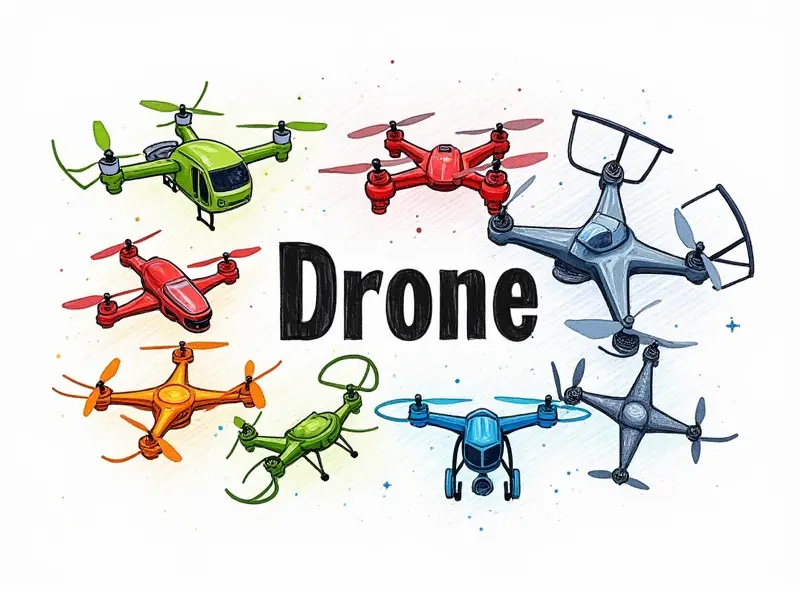Can i fly an RC plane indoors?

Flying RC Planes Indoors: Is It Possible?
Remote control (RC) planes have long been a favorite hobby among aviation enthusiasts, offering the thrill of flight without the need for a pilot's license. However, many wonder if it’s feasible to fly these miniature aircraft indoors. This article delves into the intricacies and challenges of indoor RC plane flying, providing insights on safety, feasibility, and tips for beginners.
Challenges of Flying RC Planes Inside
Flying an RC plane indoors presents a unique set of challenges that are not encountered when operating these aircraft outdoors. The confined space limits maneuverability and can lead to collisions with walls or obstacles. Additionally, the lack of wind resistance makes it difficult to maintain control over the aircraft's speed and direction.
Space Constraints
- Limited Maneuvering Space: Indoor environments are typically smaller than outdoor spaces, making it challenging for pilots to execute complex maneuvers without hitting walls or other objects.
- Obstacle Avoidance: Pilots must be vigilant about avoiding furniture and other obstacles that can interfere with flight paths.
Airflow Issues
- Lack of Wind Resistance: Without natural wind, indoor flying requires pilots to adjust their techniques to compensate for the absence of air resistance.
- Ventilation Concerns: Poor ventilation can cause condensation and humidity issues that may affect electronic components.
Tips for Flying RC Planes Indoors
To successfully fly an RC plane indoors, it’s crucial to follow certain guidelines and tips. These strategies help ensure a safe and enjoyable flying experience:
Choose the Right Plane
- Select Small-Sized Models: Opt for smaller RC planes designed specifically for indoor use.
- Consider Electric Propulsion: Electric-powered models are quieter and easier to control indoors compared to gas or nitro engines.
Create a Safe Environment
- Clean Space: Ensure the flying area is free from clutter and obstacles that could interfere with flight paths.
- Lighting: Adequate lighting is essential for visibility, especially in darker indoor settings.
Practice Control Techniques
- Familiarize Yourself with Controls: Spend time practicing basic maneuvers before attempting more complex flights.
- Use a Simulator: Many RC plane simulators can help you hone your skills in a risk-free environment.
Indoor RC Plane Flight Feasibility
The feasibility of flying an RC plane indoors largely depends on the specific model and the indoor space available. Smaller, electric-powered planes are generally more suitable for indoor use due to their maneuverability and ease of control. However, larger models or those with gas engines may pose significant challenges in confined spaces.
Is Indoor RC Plane Flying Safe?
Safety is a paramount concern when flying RC planes indoors. The risk of collisions with walls or other objects can lead to damage to the aircraft and potential injury to bystanders. It’s essential to follow safety guidelines, such as using protective gear like goggles and helmets, and ensuring that all participants are aware of the flight area.
Exploring Indoor RC Plane Possibilities
Indoor flying offers unique opportunities for experimentation with different types of RC planes and control techniques. Pilots can explore aerobatic maneuvers in a controlled environment without the risks associated with outdoor flights. This makes indoor flying an excellent option for beginners looking to develop their skills.
Can You Really Fly RC Planes Indoors?
The answer is yes, but with certain limitations and precautions. Indoor RC plane flying can be a rewarding experience if approached with the right mindset and equipment. By selecting appropriate models and adhering to safety guidelines, enthusiasts can enjoy the thrill of flight in a controlled indoor setting.
Indoor RC Plane Flying Demystified
Flying an RC plane indoors requires careful planning and adherence to specific rules and best practices. Understanding these factors helps ensure a safe and enjoyable flying experience for both pilots and spectators.
Rules of Indoor Flight
- No Unauthorized Access: Ensure that only authorized individuals are present during flight sessions.
- Clear Communication: Maintain clear communication between the pilot and ground crew to avoid misunderstandings.
Best Indoor RC Planes for Beginners
For those new to indoor flying, choosing the right plane is crucial. Here are some top recommendations for beginners:
Small Electric Models
- Flying Wing Designs: Flying wings offer excellent maneuverability and stability in confined spaces.
- Educational Kits: Many manufacturers provide educational kits that include everything needed to start flying indoors.
Should You Try Indoor RC Plane Flying?
If you’re interested in aviation but lack the space or resources for outdoor flights, indoor RC plane flying can be a fantastic alternative. It provides an opportunity to learn and refine your skills in a controlled environment before venturing outdoors.
RC Plane Indoor Flying Rules
To ensure a safe and enjoyable experience, it’s important to follow established rules:
- Wear Protective Gear: Use goggles and helmets to protect against potential debris or collisions.
- Maintain Flight Area: Keep the flying area clean and free from obstacles.
Conclusion
Flying RC planes indoors is not only possible but can also be a rewarding experience for aviation enthusiasts. By selecting appropriate models, adhering to safety guidelines, and following best practices, pilots can enjoy the thrill of flight in a controlled indoor setting. Whether you’re a beginner or an experienced flyer looking to expand your skills, indoor flying offers unique opportunities and challenges that make it an exciting hobby.

